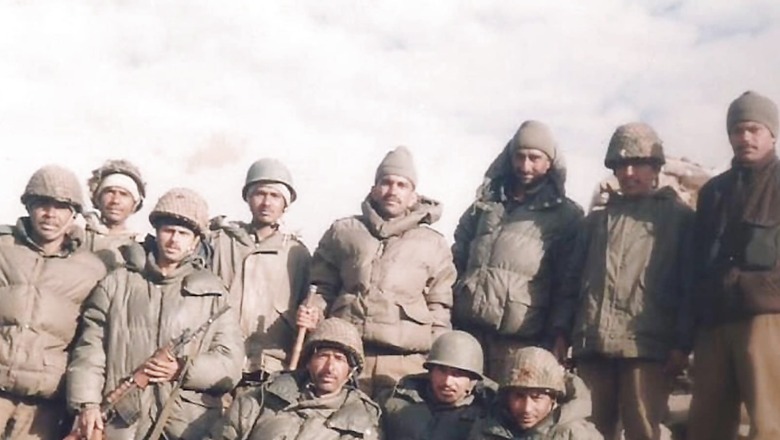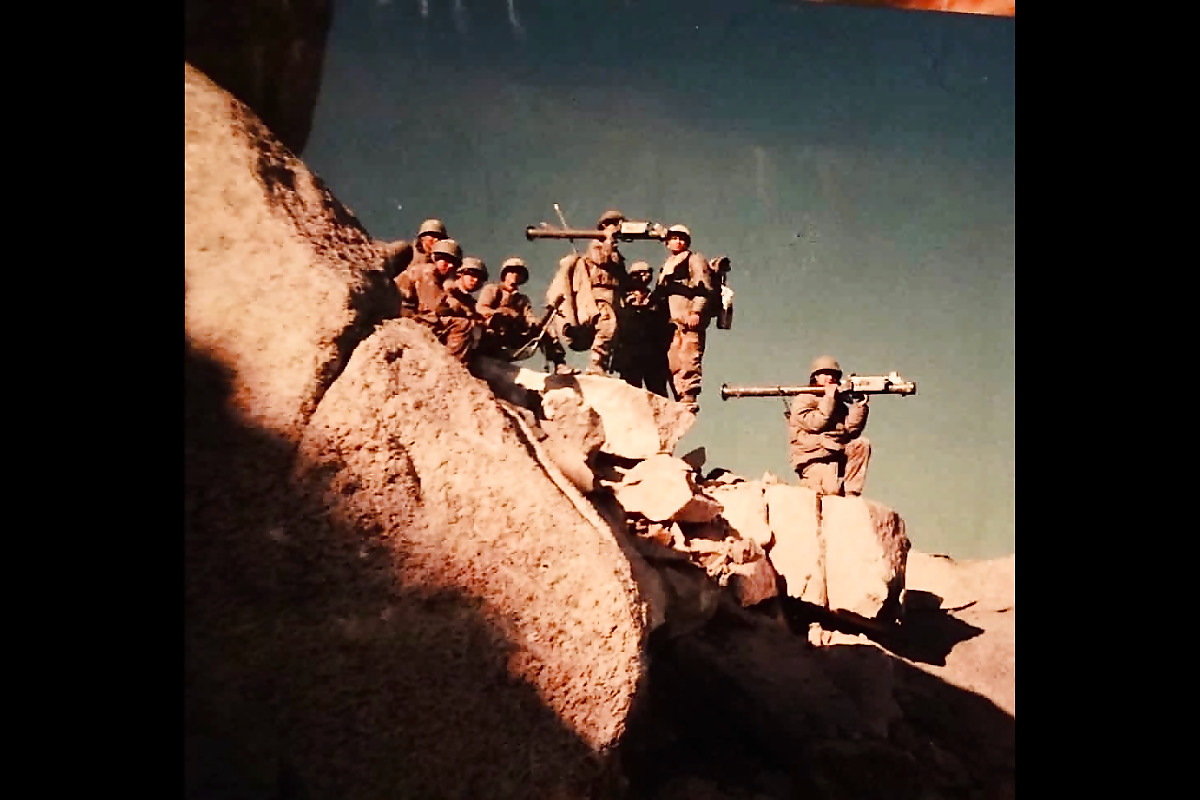
views
Almost 25 infantry battalions and an oversized artillery brigade with nearly 20 batteries were employed during the Kargil conflict over a two-month period. Several units stayed on for the entire duration of the conflict, while some were inducted mid-way to pump in fresh legs into a tough campaign. The Indian Air Force (IAF) initially deployed around 10 fighter squadrons, two Mi-17 units and a few other helicopter and transport units, with the Mirage-2000 squadrons coming into the fight a week after the conflict erupted into a full-scale war.
The ‘Guts and Glory’ stories that have captured the imagination of the country over the last two decades have primarily revolved around units that were involved in the successful recapture of the Tololing and Tiger Hill complexes. These were battles worthy of the hype and the glory that followed the units, which were involved in the final stages of these battles—the exploits of 13 JAK RIF, 2 RAJ RIF and 18 GRENADIERS captured the imagination of an information-starved nation which had seen the power of optics and media reporting during Operation Desert Storm in 1991.
However, there were several units that performed as well, such as 18 GARHWAL RIFLES, that were pitchforked into the battle in ways that ‘reinforced failures that had occurred only days earlier,’ according to its commanding officer Colonel Samir Chakravorty (later Major General). It was then left to the ingenuity and resilience of the unit to convert failure into success that has been grudgingly acknowledged. Here is the story of this battalion.
Assaulting Points 5140 and 4700
Samir Chakravorty was a hard-driving, straight-talking commanding officer for whom the mission was as important as the men he commanded. The battalion had been operating in the Lolab Valley in North Kashmir at a significantly lower altitude and after a week’s acclimatization, on his insistence it was inducted into the battle. It was early June and 18 GRENADIERS had dug in a few hundred metres below their objective of Tololing Top, creating a base for a final assault. 18 GARHWAL RIFLES was initially given the task of securing Tololing Top, which was then reassigned to 2 RAJ RIF. The Garhwalis were instead ordered to assault the formidable Point 5140 from the east through Bhimbat Nala.
This was the same route that had been unsuccessfully attempted by 1 Naga two weeks earlier with serious casualties, leading Chakravorty to term his mission as a ‘reinforcement of failure’. Climbing slowly up a seven-kilometre stretch, 18 GARHWAL RIFLES came under constant fire from all the heights to their west, but managed to avoid too many casualties. Between June 12 and 15, the battalion was beaten back from Point 5140, but after a couple of firefights, the enemy decided to vacate the feature. By 17 June, Point 5140 was occupied by Indian troops.
ALSO READ | They Too Fought in Kargil: 108 Squadron’s Innovative Tactics to Target Enemy Stood Out
18 GARHWAL RIFLES returned to base and, after a few days of recuperation, were assigned another set of tricky heights northwest of Tololing including Point 4700. This was an equally tough proposition and by the time the unit captured the height, it had been fighting for over three weeks and had lost 15 men, with another 55 injured. Though Maj General (later Lt Gen) Mohinder Puri, the divisional commander of 8 Mountain Division, acknowledges the contribution of the battalion after they captured Point 4700, saying that it had displayed “exceptional valour and dogged determination” to “overcome initial setbacks with competence and professionalism,” Chakravorty reckons that it is time to confront the several shades of war that emerged from those tough days.
Reflecting on what the major lessons for him as a commanding officer were, he reckons that addressing the fear and doubt in the minds of troops and officers during the early stages of the conflict by leading from the front was the only way out. Good leadership during that conflict, he added, meant having a high degree of situational awareness, the ability to insulate your troops from outside pressures and ensure that they concentrate on the task at hand to fight battles as trained and rehearsed.
Leo Murray, a British military analyst and former soldier, observes in his book The Psychology of Combat: War Games that “if the conditions are right then almost any man will fight, change those conditions and almost everybody will stop fighting” and “training and experience set the psychological backdrop for a battle”. It is precisely such a situation that confronted several units during the Kargil War. Though 18 GARHWAL RIFLES was awarded a citation by the Chief of Army Staff, Chakravorty remains sceptical and a trifle cynical about the rush for honours and awards after every conflict and the lack of any serious reflection on the mistakes made and lessons learnt.
The Success of 1/11 GORKHA RIFLES
As one travels eastwards from Dras towards Leh, there is a fork on NH 1 that traverses north towards Batalik. It is here, away from the gaze of the media and the television crews, that some of the toughest battles during the Kargil conflict were fought around the formidable Jubar and Khalubar Ridges. The terrain there, according to many who have served in the area, is tough, unforgiving and difficult to monitor and defend. It is in this sector that the first intrusions were detected by the Indian Army in early May 1999; the first serious losses suffered by the Indian Army; and where units like 1/11 GORKHA RIFLES fought several tough battles against experienced and well-acclimatized troops of the Pakistan Army’s 5thand 8th Battalions of the Northern Light Infantry.

1/11 GORKHA RIFLES with Stinger missiles after the capture of Pt 5287: Photo Credit: Brigadier Amul Asthana (Retd)
1/11 GR was among the earliest deployed units in the Batalik Sector and emerged from the conflict as a much-decorated unit with a posthumous Param Vir Chakra for Lt Manoj Pandey and a Vir Chakra for its Commanding Officer among other awards, but more importantly, the travails of this unit during the early days of the conflict under an officiatingcommanding officer has largely been subsumed by its successes in the later weeks.
By any yardstick, the Kargil conflict was a high-intensity and brutal limited conflict that threw up several lessons at every level—tactical, operational and strategic. As time passes, it is important to study and learn from successful units and the not-so successful ones to arrive at a holistic analysis of the conflict, which remains highly relevant in the context of a high probability that the next conflict that India is thrust into could well be in terrain not unlike the one experienced in Kargil1999.
This is a two-part series on unsung battalions and squadrons that fought in Kargil. You can read Part 2 here.
Air Vice Marshal Arjun Subramaniam (Retd) is a military historian and the author of ‘India’s Wars’ and ‘Full Spectrum’. The views expressed in this article are those of the author and do not represent the stand of this publication.
Read all the Latest News, Breaking News and Coronavirus News here.
















Comments
0 comment